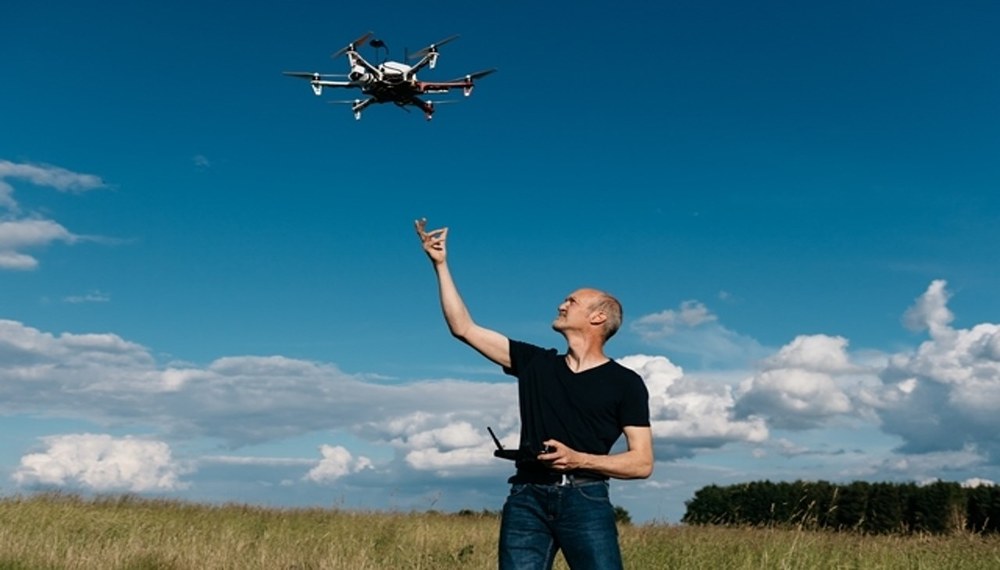DLR Wildlife Finder: high-tech to protect animals
Rescue from mowers
Every year in Germany, several hundred thousand wild animals are hit, mutilated or killed when meadows are first mowed in springtime — whether fawns, baby hares, pheasants, partridges or other ground nesters (Fig. 1). For a long time, all attempts failed to spare animals this fate.

Between 1999 and 2020, the German Aerospace Center (DLR) in Oberpfaffenhofen has developed and tested a large number of methods and prototypes using remote sensing technology to detect and subsequently safeguard fawns and ground nesters in the meadows. The systems all make use of the heat -- infrared radiation – emitted by the animals, which is higher than that of the surrounding meadow, given suitable surveillance conditions.
Concepts and platforms
- Portable Infrared Wildlife Finder: The first generation of wildllife finders consists of a series of downward-directed infrared sensors mounted on a telescoping rod that can be carried by one person walking through a meadow (Fig. 2). The equipment monitors a six-metre wide strip of ground and optically and acoustically reacts to warm objects. Since 1999 the isa industrieelektronik GmbH company in Weiden has marketed the Infrared Wildlife Finder.
Because it is portable, the Infrared Wildlife Finder is extremely useful when searching for fawns, but it is not very satisfactory for use with a tractor. This is because mowing usually takes place in warm, sunny weather. But at such times the meadow itself has considerably heated up at some locations. Since the Infrared Wildlife Finder reacts to temperature differences, these warm places in the grass also prompt a response from the equipment. For a farmer busy at work frequent false alarms are, however, unacceptable.
- Tractor-mounted version: For this reason between 2008 and 2011 DLR developed together with industrial and academic partners a wildlife finder mounted on a mower, which very reliably detected only wildlife during mowing. In addition to the tried and tested infrared detectors, among other options a radar system and various intelligent camera systems in the visible and thermal infrared spectral ranges were investigated (Fig. 3). Combining several sensor technologies greatly increases the likelihood of detection. A summary of project results can be accessed from the download column at right.

Rapid technological progress in the area of small, unmanned aerial vehicles has also made them attractive as a platform for wildlife rescue systems.
- “Flying Wildlife Finder”: Between 2012 and 2015 the DLR Remote Sensing Technology Institute developed the first practical flying wildlife finder worldwide (Fig. 4) as part of the “System and Methodology for Rescuing Fawns during Grassland Mowing” project. The system was successful optimized to meet the design criteria „rapid operational capability“, „assured high level of detection also with poor boundary conditions (ambient temperature, solar irradiance)” and “high level area-coverage”. With a net search performance of 20 ha/hour the Flying Wildlife Finder automatically detects and locates fawns not only during twilight and overcast skies (percentage of unnoticed fawns: 0 %), but also in bright sunshine (percentage of unnoticed fawns < 10 %). The results of this work are documented in the final project report and in the doctoral dissertation of Dr. M. Israel, which was completed at the same time. (see the download links at right).
Technology transfer, spin-off company
With support from DLR Technology Marketing and the Helmholtz Association, DLR researcher Dr. Martin Israel founded in 2020 together with a partner the start-up company thermal DRONES GmbH to market, among other products, the Flying Wildlife Finder. With this spin-off DLR’s over 30-year technology development path to remote-sensing based wildlife rescue has come to a successful conclusion.
Numerous reports in the press and TV broadcasts about DLR activities related to efficient animal protection document their societal relevance. Their high innovativeness is confirmed by over 10 patents and a number of awards:



